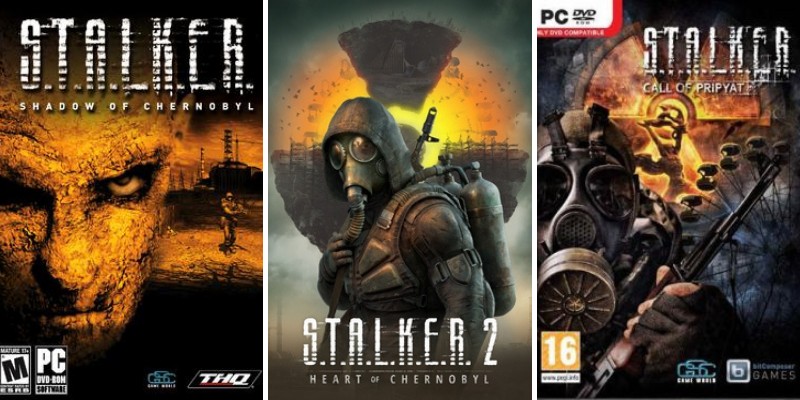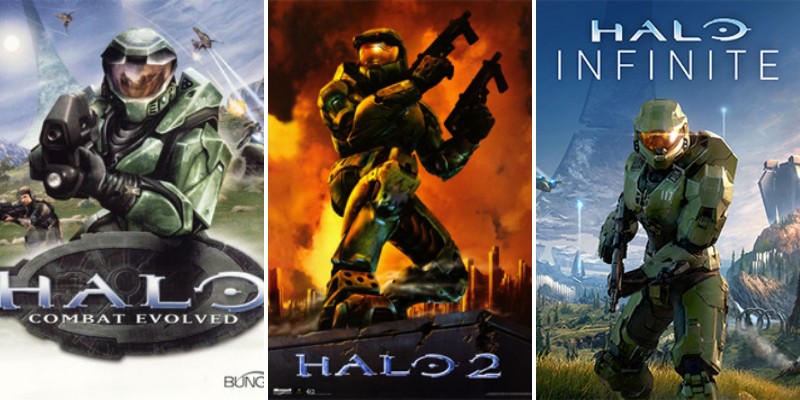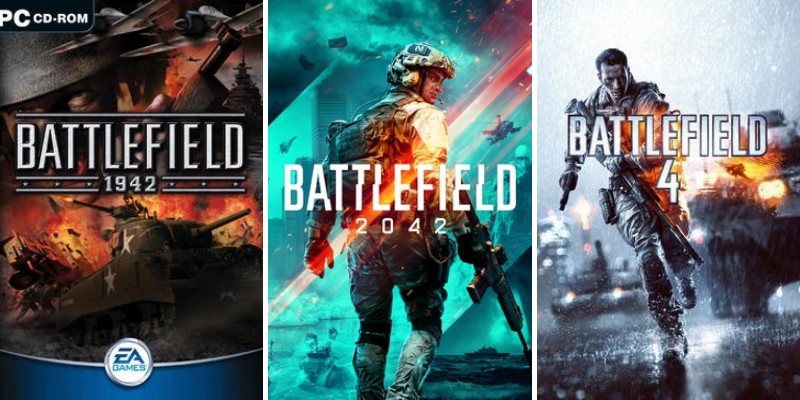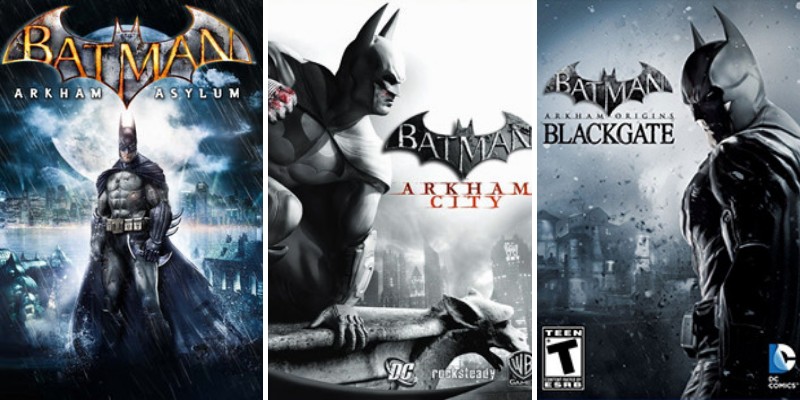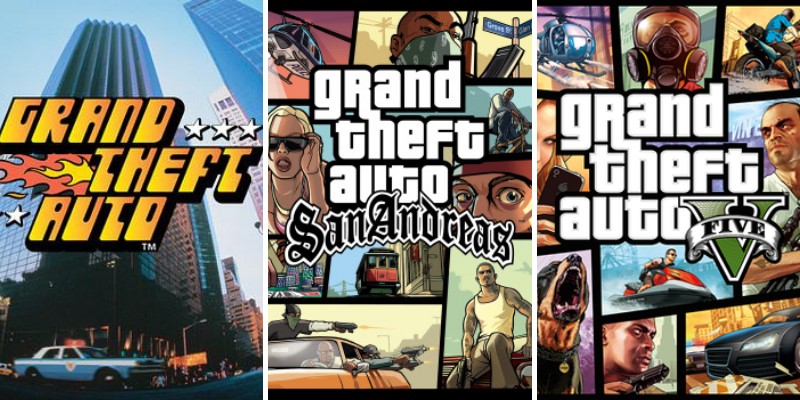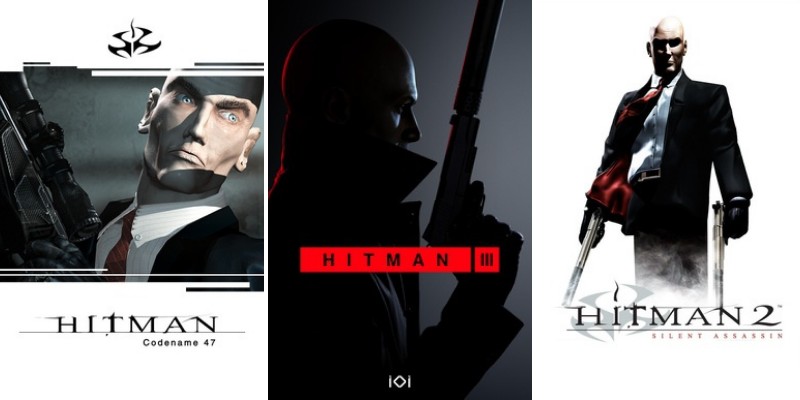The Final Fantasy series of games have it so that each game is a stand-alone plot, in general. The plot, characters, and settings almost always change each time.
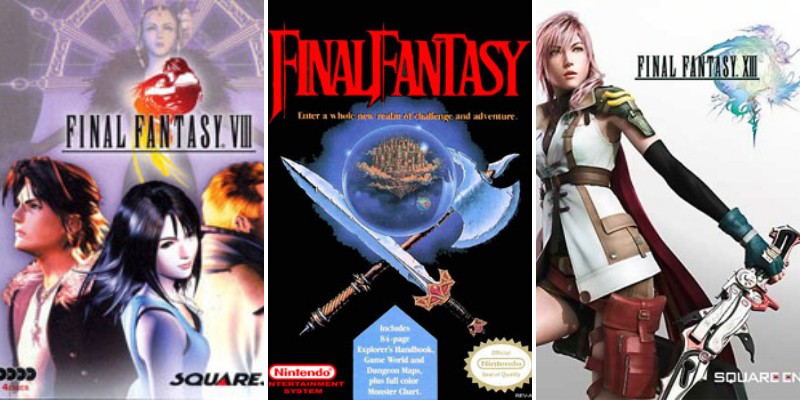
What they have in common is that they all draw from Japanese mythology with science fantasy elements. The games are also almost always in the role-playing genre for video games (RPG).
Below you will find all Final Fantasy games (Main Series) in order they were initially released, with a brief description of each one (game play, characteristics etc).
Final Fantasy (1987)
The first game in the series came out for the Nintendo Entertainment System, or NES.
It started with what would become iconic later on in the series, namely RPG elements.
You gathered a party of characters that moved around on an Overworld or Dungeon map, and then when you entered into combat, you controlled your characters by choosing from a menu where you could do Magic, Fight, Drink, Item, or Run.
The fight then flowed from there using hit points to represent your life.
Final Fantasy II (1988)
This game initially came out just for the Family Computer system, which was a Japanese NES. Typically it’s known as Famicom.
Later it was ported to many more systems. The plot focuses on four young people who had their parents killed by an empire called Palamecia.
It was generally not known in the west, and it’s not the same as the Final Fantasy II game released for the U.S., which comes later.
Gameplay is similar to Final Fantasy where you get characters who upgrade their abilities over time, although there are no experience points in this game.
The plot does not carry over from Final Fantasy at all, starting the pattern of each FF game being new every time.
Final Fantasy III (1990)
This is again a game made mostly for Japan on the special Japanese Nintendo called Famicom.
It was changed into a game that was released later in the series for U.S. audiences.
The gameplay has new elements from the previous two games while keeping the other role-playing elements in the game.
You still choose attacks, but now you only see hit points of enemies after you attack them.
Experience points are back again, and now there’s a class system where there wasn’t one before.
In previous games, you were locked into your class for the whole game, now there’s more variety than you can choose in the form of “jobs.”
The plot involves crystals like in the first Final Fantasy, and the need to create a balance to avoid the same fate as a previous ruined civilization.
Final Fantasy IV (1991)
This game was called Final Fantasy II when it was released in the United States. This happened because there were extra Japanese games not released in the U.S.
This game came out for Super Nintendo. It was extremely popular, and if you count up all the different versions of the game, people have bought it over 4 million times.
The gameplay for the game was famous for featuring a large number of characters.
Each character had its special abilities and mechanics. There were a large number of different settings for the game including forests, towers, caves, and even on skyships.
One element that was different for this game as opposed to others was the Active Time Battle system, which meant that instead of being turn-based, you were giving commands in real-time.
Your character’s speed determined how fast the action bar filled up, which determined how quickly you could input commands.
The game plot takes place on a version of Earth that has the Overworld where people live and an underworld where dwarves live. There’s also an artificial moon where the Lunarians live.
Final Fantasy V (1992)
FFV was released for Super Famicom which is the Japanese version of the Super Nintendo.
This game was originally for Japan only. The game follows a character named Bartz who is a wanderer.
He finds a meteorite on the ground, along with characters who warn about the Four Crystals that have power over the world’s elements. This crystal elemental theme repeats often in the FF franchise.
Gameplay expanded the Job system widely and became very popular even though it was only released in Japan.
Later on, it was ported to other systems like PlayStation. It sold hundreds of thousands of copies on that system.
Final Fantasy VI (1994)
FFVI came out for Super Nintendo and was released in the U.S. In its release, it was known as Final Fantasy III because of the discrepancy with the Japanese games.
The game is set in a second industrial revolution where there’s a lot of technology in the world.
Like other FF games, there are many permanent characters to choose from throughout the game.
It’s a fairly mature game, with many themes that are more for adults, including a rebellion against a military dictatorship.
It became a highly popular game throughout the world, especially in the U.S.
Like other final fantasy games, it uses the ATB system where you issue commands to your characters in real-time instead of just waiting for your turn.
One system that’s unique to this game is the Esper system. These are entities that exist in something called magicite shards.
These allow you to summon powerful beings, another theme that shows up in Final Fantasy a lot.
Characters who have this item can use magic spells. Eventually, they just have that power in them innately.
Final Fantasy VII (1997)
FF7 is one of the most popular FF games of all time. It came out for Playstation initially, and eventually, you were able to play it on platforms like Windows, iOS, PS4, Android, Nintendo Switch, and more.
It added some significant gameplay elements like minigames, Limit Breaks, and something called Materia.
As you move around the overworld map, you are drawn into random encounters that attack you on the battle screen.
There you have to choose options like attack or magic to defeat the enemy. Limit breaks are special attacks different for each character that are only possible after your bar fills up due to enemy attacks.
This was a big game from the beginning with a staff of more than 100 people and a working budget of $80 million.
Final Fantasy VIII (1999)
This game came out for PlayStation initially and was eventually ported over to many other systems due to its popularity.
There are many different ways to move around through the game world, including by foot, or on a magical horse-like bird called a Chocobo. There were also airships.
New gameplay elements included a monster summoning option called Guardian Forces.
You could assign one of these to a character, which allowed them to use magical attacks from that entity.
This is instead of using a pool of magic points to determine what you can cast, like in previous games.
Instead, you got spells that you used up one by one or put on statistics like Strength to make them better.
All this meant that the game has a lot of customizability in terms of how you wanted to play it.
Final Fantasy IX (2000)
FF9 came out for PlayStation originally, though now it’s been ported to modern systems.
The story is about a war that happens between countries in a middle ages world called Gaia.
One of the beginning characters is named Zidane Tribal, who is a thief. He kidnaps a princess named Garnet Til Alexandros on the 17th as part of a secret plot.
The goal of the characters is to stop the evil Queen Brahne of Alexandria who started a terrible war.
Saying that FF 9 is a popular game is an understatement. Many have said it’s one of the best games ever made.
This was one of the games that introduced the idea of a character with an exclamation point over their head to indicate that they had something important to tell you.
There’s also the new system of Active Time Events which allows things to happen at the same time within the game.
The game also has the option to go into “trance mode” after a player is hit with enough damage.
This mode makes the player stronger and allows them to hit harder. It is based on the limit break option from a previous game.
Final Fantasy X (2001)
FF X came out for PlayStation 2. This is the first game that has fully three-dimensional world screens.
It uses a new option instead of an active time battle one which is called “Conditional turn-based battle.”
It also uses a new system for leveling called Sphere Grid. The game takes place in a world called Spira which is a bit like the South Pacific in real life.
The main character is named Tidus and he leads adventurers to fight a monster called Sin. The game was so popular it spawned its sequel, FFX-II.
Final Fantasy XI (2002)
This game is also known as Final Fantasy XI Online and it’s an online RPG, known as an MMORPG.
The video game was available for Windows, PS2, and Xbox 360. The game went from 2002 until 2016 in terms of support from the developer.
Servers did persist after that. It was different from other FF games because you could customize your character to be from 5 different races.
Also, instead of random encounters, you could go fight free-roaming enemies that wandered around in real-time.
You could play either missions or quests in the game, with missions advancing the story, and quests being side options for gaining items or “fame” which changed how non-player characters related to you.
Final Fantasy XII (2006)
Final Fantasy 12 came out initially for Play Station 2 and eventually was ported to PS4, Windows, Switch, and Xbox One.
New gameplay elements included a fully open world, a camera you could control, and the Gambit system, which allowed you to control your other NPC characters during a battle.
The plot of the game is in the land of Ivalice which contained two empires, Archadia and Rozarria, that are in a never-ending war.
There are still similarities for the series though, including the fact that the game still has the Moogle race as well as the horse bird combinations known as Chocobos.
Final Fantasy X111 (2009)
Once again, platforms for this game included PS3, Xbox 360, Windows, and mobile versions later on.
A big change for this game is that it’s rendered to scale instead of having just a caricature of the characters like many other FF games.
There’s an in-game datalog that contains information about the different creatures in the game.
Just like in FF12, you don’t have random encounters and instead can try moving around enemies moving in real-time in the field.
The system has moved back to ATB where everything is real-time. You have three characters at a time but only control one of them with the others controlled by AI.
The setting for the game is a world called Gran Pulse. The game focuses on Cocoon, which is a huge artificial sphere that floats above the surface.
Final Fantasy XIV (2010)
This game is back in online role-playing mode again. Initial platforms were Windows and PS3, and it later got support for systems like Mac, PS4, and PS5.
The original was released in 2010 but it failed commercially. They released it again later on.
Final Fantasy XIV: A Realm Reborn (2013)
Realm Reborn is an MMORPG representing a re-release for the previous game that failed.
This time they reworked it with a new team. It’s a persistent online world where you can interact with anything.
You can customize your character in terms of race, gender, facial features, class, and even name it. You have to choose a server closest to you, and the game even helps with language.
The character progression is based on experience points. You can get XP by doing dungeons or playing in the Full Active Time Events, or FATE.
You will then kill monsters with other players. Another change for this game is that you have a party system where you can team up with other players in the game like in traditional MMORPG systems.
There’s also a guild system called Free Companies where the guilds are run by players. The world here is called Hydaelyn.
Final Fantasy XV (2016)
The platforms for FF 15 include PS4, Xbox One, Windows, and Google Stadia.
The game is open world and has the usual role-playing elements. It follows a character named Noctis Lucis Caelum.
He is traveling across the world of Eos. He brings companion characters with him, but you can only control Noctis.
It has some RPG action elements since you can run around more traditionally. You can also ride a Chocobo or even a car.
The gameplay includes a real-time system called active Cross Battle. It differs from previous systems due to ditching the menu approach.
You don’t go into a different battle screen, and instead, you fight in the regular environment.
You can attack, defend, warp to an open space, use items, or enter wait mode. So, overall the game keeps RPG elements but it’s much more of an action RPG style than the previous menu modes.
The world, called Eos, has four different countries. The world also has Astrals, which are 6 beings of divine origin.
Final Fantasy XVI (TBA)
The newest game in the series is FF16, and it’s not certain when it’s coming out yet.
It will certainly be coming out for PS5, however. Details known about it include that it will be set in a new world called Valisthea that is filled with the light of the Mothercrystals. They are mountain size crystals with a tower built around them.
The game will also involve the Eikons, who are powerful and lethal creatures within the world.
Image Credits
By gamespot, Fair use, https://en.wikipedia.org/w/index.php?curid=1373964
By gamespot, Fair use, https://en.wikipedia.org/w/index.php?curid=2122514
By Square Enix, Fair use, https://en.wikipedia.org/w/index.php?curid=25269547
